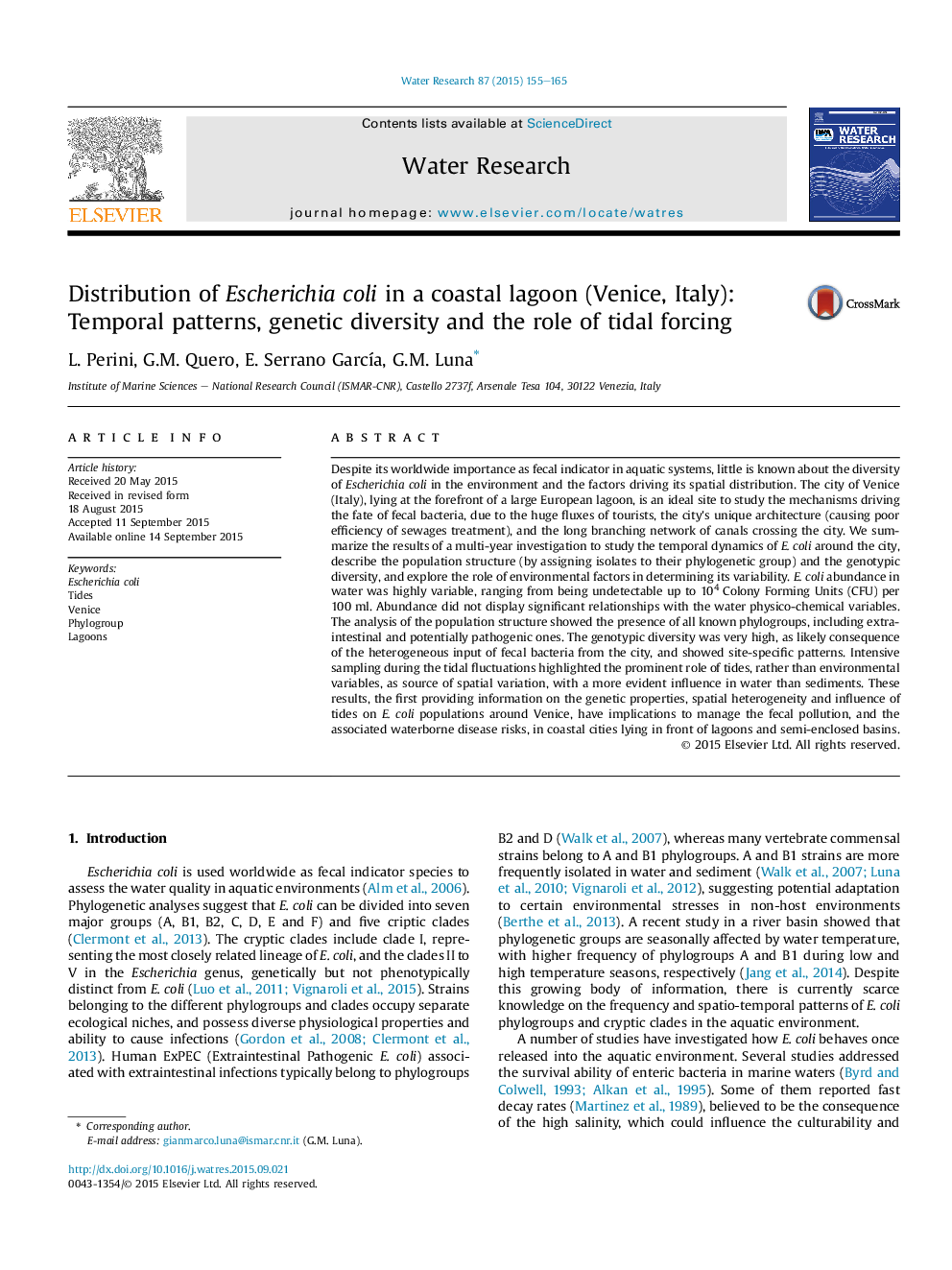| Article ID | Journal | Published Year | Pages | File Type |
|---|---|---|---|---|
| 6365975 | Water Research | 2015 | 11 Pages |
â¢Coastal lagoons account for more than 10% of coastal areas worldwide.â¢Little is known on the temporal patterns and diversity of E. coli in these areas.â¢Genotypically-diverse populations of E. coli persist in the Venice lagoon.â¢Tides play a prominent role as source of spatial and temporal variation.â¢Urbanized lagoons are ideal sites to study patterns and fate of enteric bacteria.
Despite its worldwide importance as fecal indicator in aquatic systems, little is known about the diversity of Escherichia coli in the environment and the factors driving its spatial distribution. The city of Venice (Italy), lying at the forefront of a large European lagoon, is an ideal site to study the mechanisms driving the fate of fecal bacteria, due to the huge fluxes of tourists, the city's unique architecture (causing poor efficiency of sewages treatment), and the long branching network of canals crossing the city. We summarize the results of a multi-year investigation to study the temporal dynamics of E. coli around the city, describe the population structure (by assigning isolates to their phylogenetic group) and the genotypic diversity, and explore the role of environmental factors in determining its variability. E. coli abundance in water was highly variable, ranging from being undetectable up to 104 Colony Forming Units (CFU) per 100 ml. Abundance did not display significant relationships with the water physico-chemical variables. The analysis of the population structure showed the presence of all known phylogroups, including extra-intestinal and potentially pathogenic ones. The genotypic diversity was very high, as likely consequence of the heterogeneous input of fecal bacteria from the city, and showed site-specific patterns. Intensive sampling during the tidal fluctuations highlighted the prominent role of tides, rather than environmental variables, as source of spatial variation, with a more evident influence in water than sediments. These results, the first providing information on the genetic properties, spatial heterogeneity and influence of tides on E. coli populations around Venice, have implications to manage the fecal pollution, and the associated waterborne disease risks, in coastal cities lying in front of lagoons and semi-enclosed basins.
Graphical abstractDownload high-res image (502KB)Download full-size image
